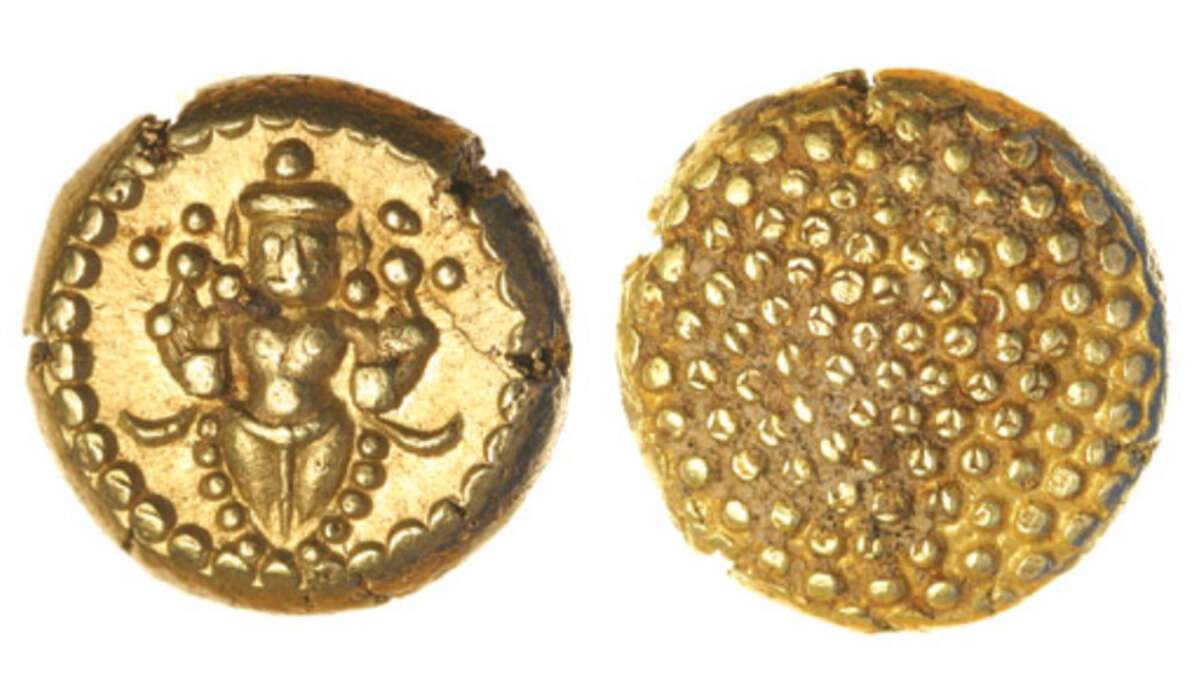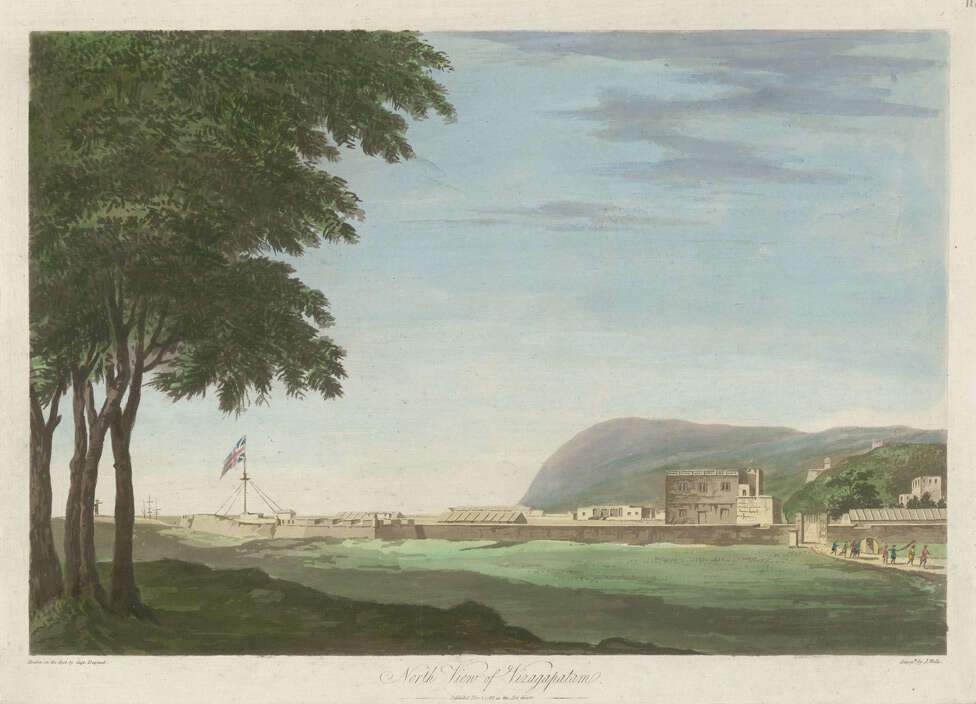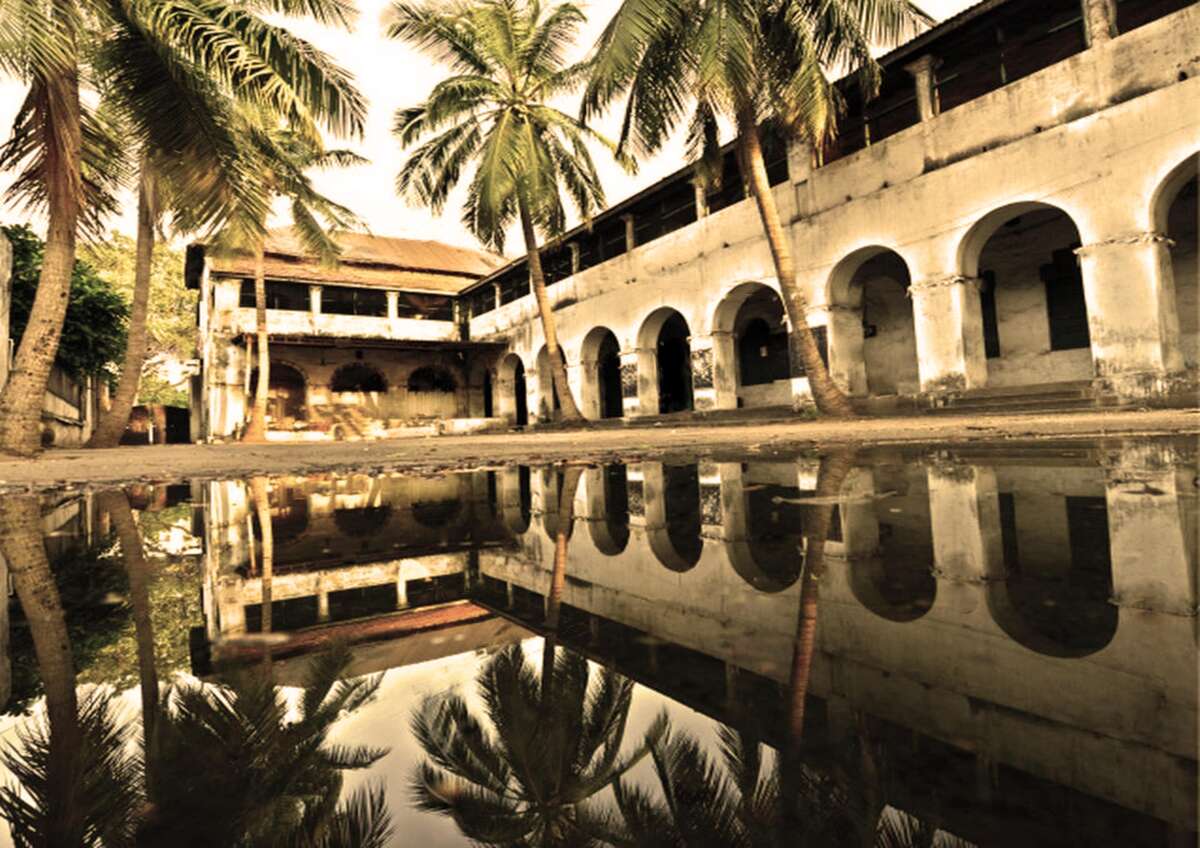What could possibly link Vizag, a quaint coastal town nestled on India’s Eastern Coast, with Yale University, one of the oldest and most prestigious educational institutions in the United States? John Castellas, in this article, drawing from historical records housed in Fort St George, Chennai, uncovers intriguing relations between these seemingly disparate locations, uncovering the city’s past in a complex and rich narrative.
To ‘shake the pagoda tree’ was a Colonial-Indian euphemism that dates back to the East India Company (EIC) whose Directors and Shareholders relentlessly pursued the quick accumulation of large amounts of wealth in India by vigorous ‘shaking of the pagoda tree’. A Pagoda was a medieval unit of South Indian currency minted by rulers in Arcot and Travencore. The French, Dutch and English EIC in Madras also minted Pagodas to underpin their commercial transactions in India. The EIC Pagoda was minted at Fort St George and has, on its obverse side, a standing deity, probably Vishnu. The Pagoda was replaced in 1818 by the Rupee, Annas and Pies.
You may be interested to learn that ‘Yale’ University would not exist were it not for Vizag. That sounds like a tall order on American belief in itself and its institutions. Fancy distant Vizagapatam, being in any way responsible for the famous seat of learning in New Haven Connecticut! It is true nevertheless. Archival documents show the business methods of Elihu Yale. Expenses are cut down to the lowest ebb; the orders of Gov. Yale are for continual economy – the golden fruit of the ‘pagoda tree.’

Elihu Yale (5 April 1649 – 8 July 1721) started as a Writer (clerk) with the East India Company in 1671. He arrived in India in 1672 and rose to become the Governor of Madras, a President of the EIC and amassed a large amount of wealth in the process. He lost that position under charges of corruption for self-dealing. In later years, Yale was a benefactor to ‘His Majesty’s College of Connecticut’, and his gifts were so highly appreciated by the Trustees that by an act dated 12 September 1718, they gave the institution the famous name of Yale College, which is now Yale University.
Vizagapatam was established as an EIC Factory in about 1668. A ‘factory’ was a trading post where a number of merchants, or Factors, resided. When company ships arrived at the factories, ships’ merchants were thus enabled to exchange goods for trading immediately instead of having to wait to make deals with local merchants. A Chief Factor and Council of Factors ran factories. English history records Vizagapatam by several names used interchangeably such as Gingerlee, Inzipatam, Bixipatam, Wisagapatam, Vasingepatam and very much later as Visakha-pattanam. The textile industry was the main product of the Coromandel Coast employing hundreds of thousands of skilled weavers, dyers and washers producing enormous quantities of muslins, chintzes, cotton and quilts which found a ready market in England. As late as the 1750’s, Indian textiles accounted for sixty per cent of the total value of the EIC sales in London.

So here is a Little Story About Elihu Yale just brought to light out of musty manuscripts which had survived amid much dust for three centuries or so in the Government Record Office in Fort St. George, Chennai. The ancient fort in which the great Boston benefactor of Yale exercised his gubernatorial office is today home to the Tamil Nadu legislature, the original St Mary’s Church and a museum.
In the year 1688, the early days of the Honourable East India Company, the great idea was to make money to provide Dividends to its Shareholders and many letters show how strictly accounts were looked into, and how poorly the company’s agents were accommodated owing to the economies that were enforced from headquarters at Madras by Governor Yale.
At Vizagapatam, the company’s Factors in 1688 seem to have gone through a hard time in spite of their best efforts to keep expenses down. The Factors at Vizagapatam were John Stable, William Hall, Daniel Dubois and Charles Fleetwood.
Here is one of their letters on the subject of economy to Governor Yale. The English is somewhat quaint and would not be encouraged in the classical halls of Yale, though it was good enough, at the period for its great benefactor:
VIZAGAPATAM, 20th August 1688.
“Wee have reduced the charges of the Factory and servants as low as possible, which your Honr. will see by our Accts & Consultations, wch will be remitted at the beginning of next month; & have discharged the Chief Braminee, he being noe ways fit for the Rt. in Hon’ble Company’s Service in that imploy – indeed no occasion for him. His salary was Pagodas 50 per annum – too much for doing nothing; as also (we have discharged) his son-in-law; so that what are left are absolutely necessary. The Chief Braminee just being an old servant and understanding – as he pretended – something of Phisick (old English for Physician), we offered him Pagodas 2 per month in that employ, but he refused it.
The Bricklayres and Calpenters shall also be dis charged so soon as they have finished the building that was begun before our arrivall.”
The old-time picture of the Brahmin chief clerk with his fourteen rupees a month, “too much for doing nothing,” is picturesque and emphatic. It suggests, too, what British Factors living up-country in those unhealthy days of old must have gone through, when, without any doctor to attend them they offered seven rupees a month to their “Chief Braminee” to act as doctor instead of clerk.
However, Governor Elihu Yale of Fort St George was not satisfied apparently, although the agents dismissed their bricklayers and carpenters, unmindful of the monsoon and its effects; for a couple of months later they wrote again:
VIZAGAPATAM, 15th October 1688.
“The charge of the factory is now as low as possible be brought, which your Honour will find by the Steward’s Acct Currant for August and September, charges for buildings excepted. Finding the factory house extraordinary rotten, being maid of mud walls, and part of the second lodgings fallen down these last raines and the rest not able to stand long, wee must shortly be forced to pull all down, and build a new one, which will cost Pagodas 500 or thereabouts, or to buy a Dutch house that is offered to sale at 350 pagodas, and shall be frugall therein, assuring your Honr. that necessity force us to this charge. And hope our trade and the Rt.Hon Company’s advantage therby will answare the Expence.”
After reading the above one may reasonable conclude that Governor Elihu Yale must have shaken the pagoda tree forcibly and frequently as, thirty years later, ex-Governor Elihu Yale had his name bestowed upon the third oldest university in the United States of America. Elihu Yale gathered the golden fruit of the pagoda tree of this part of India to some effect, and it is not difficult to conjecture that it had a lot to do with the prosperity of the great seat of learning in New Haven, Connecticut.
What is the moral of this interesting story of the famous Elihu Yule? Why, that the alumni of Yale might do something for the heritage of our Old Town Vizagapatam. Appealing to its Calvinistic ethos if a little of the golden fruit of the pagoda tree were brought back to the site which in the days of the great Elihu were so prolific.

The setting for this heritage story, exploring the city’s connection with Yale University, is the grounds of the old Collector’s Office, today’s Queen Mary Girls High School in One Town Vizag, established over 150 years ago as a school for educating Telugu girls and young Hindu widows when such a notion was taboo. It is here that the EIC originally bought a Dutch House and built godowns and offices. I wonder if this story will meet the eye of a benevolent graduate who, having enjoyed the benefits of Yale, might now return the favour by ‘shaking the pagoda tree’ for the preservation of the historic, if rundown, school in Visakhapatnam on the site were it all started.
Read also: A Deep Dive Into the History and Legacy of Mrs AVN College, Vizag
Written by John Castellas whose family belonged to Vizag for 5 generations. Educated at St Aloysius, migrated to Melbourne, Australia in 1966, former General Manager Engineering at Boeing & Qantas Airways, in retirement Lecturers in Aviation Management at Swinburne University and is a Vizag aficionado.
Should you have an anecdote or history on Vizag, the author would appreciate you contacting him at jcastell@ozemail.com.au.
Stay tuned to Yo! Vizag website and follow our Instagram for such feature stories.










Discussion about this post